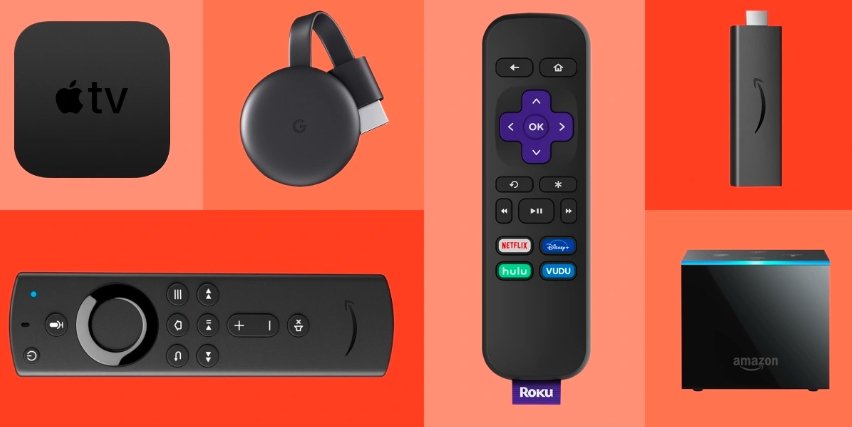Social media marketing is the use of various social media platforms and websites to promote a product or service. It involves creating and sharing content on social media networks in order to achieve marketing and branding goals. It is an effective and powerful tool for connecting with customers and creating a strong brand presence.
Connecting with customers through social media is essential for any business in today’s digital age. Social media not only provides companies with a platform to communicate with their customers, but also provides customers with an avenue to voice their opinions, ask questions, and connect with the company in meaningful ways. Businesses can use social media to increase brand awareness, build trust and credibility, create a positive brand image, and drive more sales. Customers will be more likely to purchase a product or service if they have a positive relationship with the company.
The benefits of social media marketing are vast. Companies can increase their visibility, reach more potential customers, engage with their current customers, get feedback and gain insights into their target audience. Additionally, social media marketing can help businesses create a two-way dialogue with their customers, which can lead to better customer service and improved customer loyalty. Furthermore, businesses can use social media to drive website traffic, generate leads, and increase conversions.
Overall, social media marketing is an essential tool for businesses to connect with their customers. By creating engaging content and building relationships with customers, businesses can reap the rewards of increased visibility, brand awareness, trust, and loyalty.

Understanding Your Target Audience
Importance of Knowing Your Target Audience
Knowing your target audience is essential for success in any business. It helps you to tailor your products and services to meet the needs of your customers. Additionally, understanding your target audience can help you to craft effective marketing strategies and campaigns that resonate with your target demographic. Ultimately, knowing your target audience can help you to maximize profits and grow your business.
Identifying Your Target Audience Through Market Research
Market research is an important tool for identifying your target audience. It involves gathering information about customer needs, preferences, and behaviors. This data can then be used to inform your marketing strategies and product development decisions. Additionally, market research can be used to segment your customer base into distinct groups and identify key customer segments for targeting.
Creating Buyer Personas
Creating buyer personas is a key step in understanding your target audience. Buyer personas are semi-fictional representations of your ideal customer that are based on market research and customer data. Buyer personas provide helpful insights into customer behavior and preferences, which can be used to inform marketing campaigns and product development decisions. Additionally, buyer personas can be used to develop a better understanding of your target audience and how best to reach them.
Choosing the Right Social Media Platform(s)
Overview of Popular Social Media Platforms
Social media platforms have become essential for businesses, providing them with a versatile platform for marketing, advertising, and customer engagement. Popular platforms include Facebook, Twitter, Instagram, LinkedIn, and YouTube. Each platform has its own unique features and advantages that make it suitable for different types of businesses.
How to Determine Which Platform(s) are Best for Your Business
When choosing the right platforms for your business, you must take into consideration the type of products and services you offer, the target audience you want to reach, and the type of content you want to share. For example, if you are a B2B business, LinkedIn is a great platform to help you reach other businesses and establish professional connections. If you are a B2C business, Facebook and Instagram are great platforms to reach potential customers and promote your products and services. Additionally, you should also consider the demographic of your target audience – each platform has a different user base and appeals to different age groups.
Tips for Maximizing Each Platform’s Potential
Once you have determined which platforms are best for your business, you can start maximizing their potential. Here are some tips for getting the most out of each platform: Facebook:
• Leverage Facebook Ads to reach your target audience
• Create a group to engage with your customers
• Post content regularly to keep your followers engaged
Twitter:
• Use hashtags to reach new audiences
• Engage with others in your industry
• Respond promptly to customer queries
Instagram:
• Take advantage of Instagram Stories to share timely updates
• Use relevant hashtags to increase visibility
• Post high-quality, visually appealing content
LinkedIn:
• Take advantage of LinkedIn Ads to reach your target audience
• Connect with professionals in your industry
• Share content that is relevant to your industry
YouTube:
• Create videos to engage with your target audience
• Leverage YouTube Ads to reach a wider audience
• Optimize your videos for search engines
By following these tips, you can ensure that you are getting the maximum benefit from each of these platforms and achieve your desired business goals.
Creating a Social Media Strategy
Defining your goals and objectives:
The first step in creating a social media strategy is defining the goals and objectives of your social media presence. It is important to have a clear understanding of what you want to achieve and how you plan to accomplish it. This includes identifying the target audience, determining the type of content you want to produce, and setting measurable goals for success. Having a comprehensive plan in place will help ensure that your efforts are focused and that your goals are achievable.
Choosing the right content types:
Choosing the right content types is essential for success in social media. Different types of content will be more effective for different audiences, so it is important to select the content that best suits your target audience. Consider the types of content that will be most engaging and shareable, as well as the type of content that is most appropriate for the channels you are using. Additionally, consider the types of content that you have the resources to produce, such as videos, images, or articles.
Content creation and curation:
Content creation and curation is an integral part of any successful social media strategy. Creating original content that is relevant to your target audience is essential for engagement and building relationships. Additionally, curating content from other sources can help to provide additional relevant and interesting content for your followers.
Content distribution and promotion:
Once you have created content, it is important to promote it in order to maximize its reach. This includes sharing it on social media, as well as using other methods such as email marketing, paid ads, or other types of online advertising. Additionally, it is important to track the performance of your content, in order to understand which types of content are resonating with your audience and which are not.
Engaging Your Customers
Engaging your customers on social media is an essential part of running a successful business. It allows you to build a relationship with your customers, increase loyalty and trust, and create a loyal customer base. It also helps you to understand their needs and preferences, which can lead to targeted product and service offerings.
Strategies for Encouraging Customer Engagement
There are various strategies you can use to encourage customer engagement on social media. Here are some of them:
• Connect with customers in a personal way – Respond to comments, ask questions, and create conversations with your customers. This will help to build relationships and trust.
• Offer incentives – Give discounts or freebies to customers who engage on social media. This will encourage them to continue engaging with your business.
• Create engaging content – Share interesting and relevant content that will capture the attention of your customers.
• Ask for feedback – Ask customers for feedback on your products and services. This will help you understand their needs and provide better customer service.
Tips for Handling Customer Complaints and Negative Feedback
When dealing with customer complaints or negative feedback, it is important to be professional and courteous. Here are some tips for handling customer complaints and negative feedback:
• Respond promptly – Respond to customer complaints or negative feedback as soon as possible. This will show that you are taking the matter seriously and are eager to resolve it.
• Apologize – Apologize for any inconvenience caused and thank the customer for their feedback.
• Be courteous – Be polite and respectful when responding to customer complaints or negative feedback.
• Offer a solution – Offer a solution to the customer’s problem and explain how you will resolve it.
• Follow up – Follow up with the customer to ensure that the problem has been resolved.
Engaging your customers on social media is an effective way to build relationships and trust. By using the strategies and tips outlined above, you can ensure that you are providing an excellent experience for your customers and encouraging them to engage with your business.
Measuring and Analyzing Your Results
Overview of Social Media Metrics
Social media metrics are the various measurements used to track and analyze how successful a brand or business is in its social media campaigns. The metrics can include anything from the number of followers, engagement rate, impressions, and click-through rate (CTR). By measuring these metrics, businesses can understand how their campaigns are performing and whether they are meeting their goals.
Choosing the Right Metrics for Your Goals
When choosing social media metrics to measure, it is important to consider the goals of the campaign. Different metrics will be more important depending on the campaign, and businesses should choose the metrics that will best measure their goals. For example, if the goal is to increase brand awareness, impressions and reach may be the most important metrics to measure. If the goal is to increase sales, click-through rate and conversions may be more important.
Analyzing and Interpreting Your Results
Once the metrics have been chosen and the data collected, it is time to analyze and interpret the results. This involves looking at the data, understanding what it is telling you, and drawing conclusions from it. It is important to look at the data over a longer period of time to get an accurate picture of the performance of the campaign. This will help to identify any trends and make it easier to understand how the campaign is performing.
Making Adjustments to Your Strategy Based on Your Results
Once the results have been analyzed and interpreted, it is time to make adjustments to the strategy based on the data. This could involve changing the content of the posts, the frequency of posting, or the focus of the campaign. For example, if the click-through rate is low, it may be necessary to change the content of the posts or adjust the target audience to see an improvement. Making these adjustments based on the data collected can help to ensure that the campaign is successful and meeting its goals.
Best Practices and Tips for Success
Tips for Building a Strong Social Media Presence
• Understand the platform: Before starting your social media presence, it is important to understand the platform your audience is using and how to fit your content into it. This includes researching the types of content that users engage with on the platform, the demographics of the users, and the most effective ways to communicate.
• Set Goals: Before creating social media content, it is important to set goals for what you want to achieve. These could include increasing brand awareness, increasing engagement, or driving conversions.
• Create Quality Content: Quality content is key to retaining users. Content should be high-quality, relevant, and engaging. Videos, images, and infographics can help to make content more engaging.
• Engage with Users: Engaging with users is a great way to build relationships with them and increase engagement. This can include responding to comments, questions, and complaints on your posts, or even reaching out directly.
• Monitor Performance: It is important to monitor your performance, as this will help you identify what content resonates with your audience and which strategies work best. Tools such as analytics and insights can help you track performance.

Common Mistakes to Avoid
• Not understanding the platform: It is important to understand the platform your audience is using before creating content. This includes researching the types of content that users engage with on the platform, the demographics of the users, and the most effective ways to communicate.
• Poor content: Poor content will turn off users and lead to decreased engagement. Content should be high-quality, relevant, and engaging, and should be updated regularly.
• Not engaging with users: Engaging with users is a great way to build relationships with them and increase engagement. This can include responding to comments, questions, and complaints on your posts, or even reaching out directly.
• Not monitoring performance: Not regularly monitoring your performance and making necessary changes can lead to decreased engagement and conversions. It is important to track and measure performance in order to identify what content resonates with your audience and which strategies work best.
Examples of Successful Social Media Campaigns
• Nike’s Dream Crazy Campaign: Nike’s Dream Crazy campaign was a highly successful social media campaign that focused on inspiring people to “dream crazy” and challenge the status quo. The campaign was highly successful, leading to a 3% increase in sales and a 5% increase in brand favorability.
• Coca-Cola’s Share a Coke Campaign: Coca-Cola’s Share a Coke campaign was a hugely successful social media campaign that focused on personalization and customer engagement. The campaign allowed customers to put their name or the name of a loved one on a Coke bottle, which led to increased sales and brand recognition.
• Dove’s Real Beauty Campaign: Dove’s Real Beauty campaign was a hugely successful social media campaign that focused on promoting self-esteem and body positivity. The campaign was successful in increasing engagement and brand recognition, as well as inspiring people to embrace their own beauty.
Conclusion
The power of social media marketing is undeniable. With the right strategy and tools, businesses can use social media to build relationships with customers and increase their brand awareness and visibility. Social media marketing also provides businesses with an effective way to increase customer loyalty, create brand ambassadors, and drive sales. By listening to customers, crafting compelling messages, and engaging in conversations with customers, businesses can make the most of their social media presence to foster a strong relationship with their customer base. By leveraging social media to its fullest potential, businesses can reach new customers and strengthen relationships with existing customers, leading to increased customer loyalty, sales, and profits.
FAQs
1. What is Social Media Marketing?
Social media marketing is the process of creating content to promote your business, generate leads, and build customer relationships on various social media platforms. It involves creating and sharing content on social networks, interacting with followers, and analyzing performance.
2. What are the benefits of Social Media Marketing?
The benefits of social media marketing include increased brand awareness and recognition, increased website traffic, improved customer relationships, increased sales, and better search engine ranking.
3. How can I use Social Media to connect with my customers?
You can use social media to connect with your customers by creating content that resonates with them, engaging with them in meaningful conversations, and responding to their comments and questions. Additionally, you can use social media to promote your products and services, and to build relationships with potential customers.
4. What is the best way to build relationships with customers on Social Media?
The best way to build relationships with customers on social media is to create content that is relevant to them, interact with them in meaningful conversations, and respond to their comments and questions. Additionally, you can use social media to share helpful information and resources, and to offer personalized customer service.
5. How do I choose the right Social Media platform for my business?
Choosing the right social media platform for your business depends on your target audience and the goals you have set for your business. It’s important to research the different platforms and understand which ones your target audience is using the most. Additionally, make sure the platform you choose aligns with your goals and provides the capabilities you need to reach your target audience.
6. What are the best practices for Social Media Marketing?
The best practices for social media marketing include creating engaging content, responding to customer comments and questions, engaging in meaningful conversations, monitoring performance, and optimizing for SEO. Additionally, you should be consistent with your posting schedule and make sure to measure and track your performance regularly.
7. What are the most important metrics for measuring Social Media success?
The most important metrics for measuring social media success include engagement rate, reach, click-through rate, and conversion rate. Additionally, you should monitor your brand’s sentiment, brand awareness, and website traffic to get a better understanding of how your social media efforts are performing.
8. How often should I post on Social Media?
The frequency of your social media posts will depend on the platform you are using and the goals you have set for your business. It’s important to create a consistent posting schedule and make sure you are posting content that is relevant to your target audience. Additionally, you should monitor your performance regularly and adjust your posting schedule accordingly.
9. How can I create engaging content for Social Media?
Creating engaging content for social media involves understanding your target audience, creating content that resonates with them, and using visuals to draw attention to your posts. Additionally, you should focus on creating content that is informative, entertaining, and helpful.
10. What are the best tools for Social Media Marketing?
The best tools for social media marketing include tools for scheduling and publishing content, monitoring performance, and analyzing data. Additionally, there are tools available to help with content curation and collaboration.


















